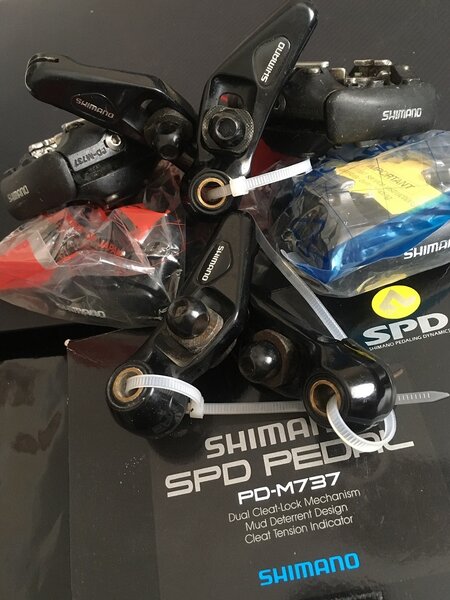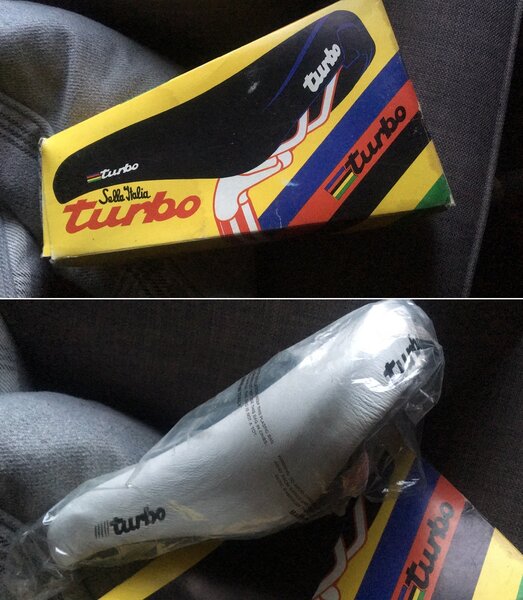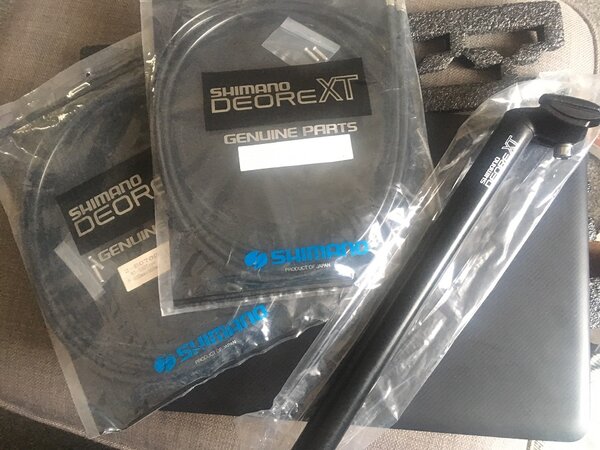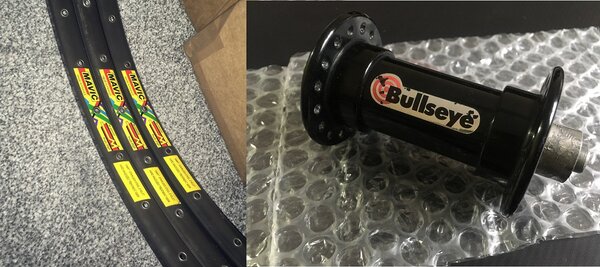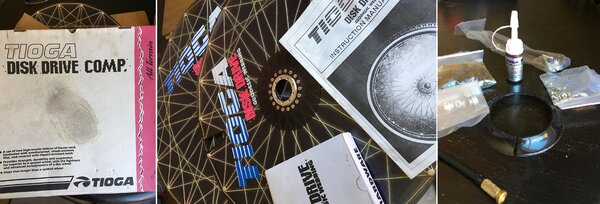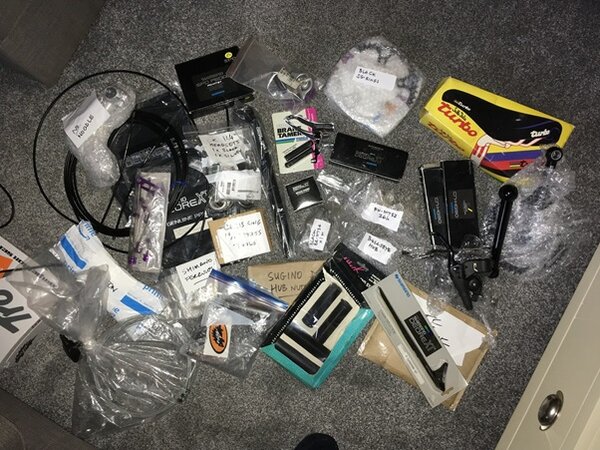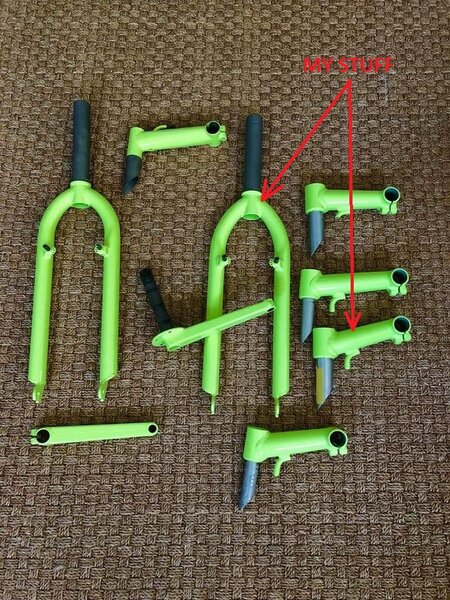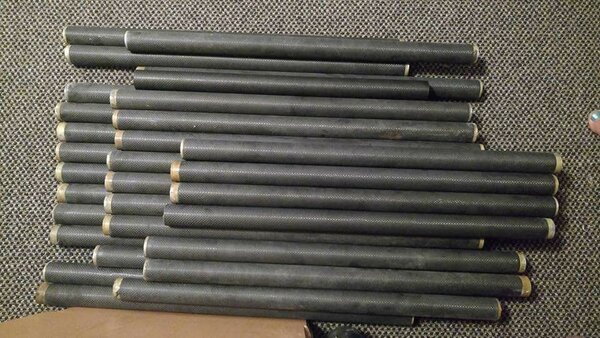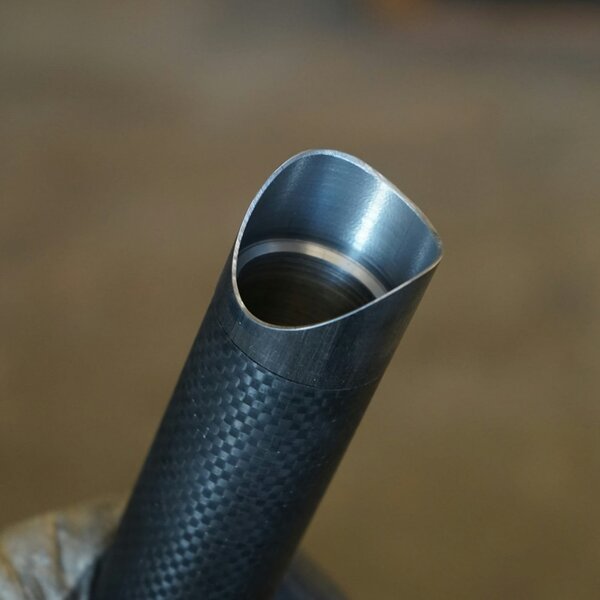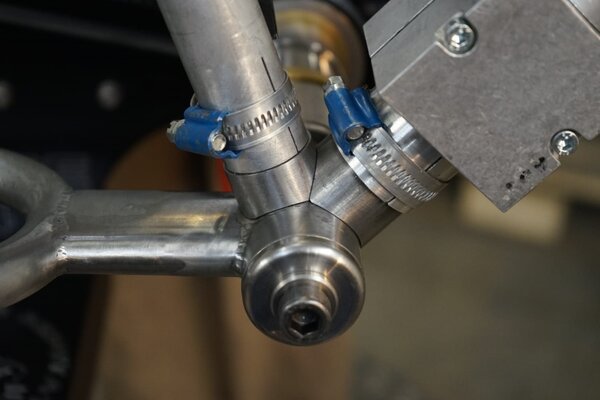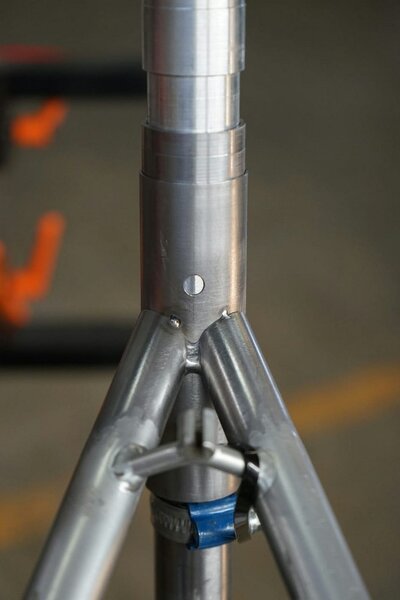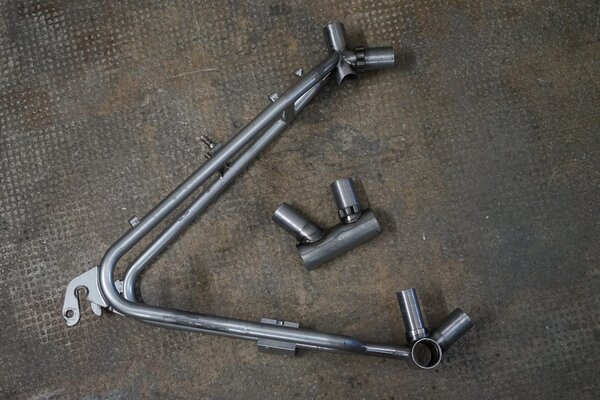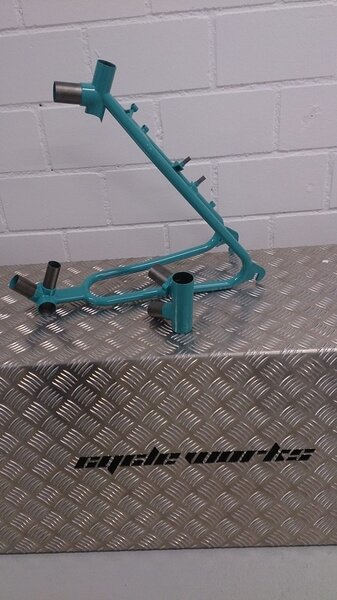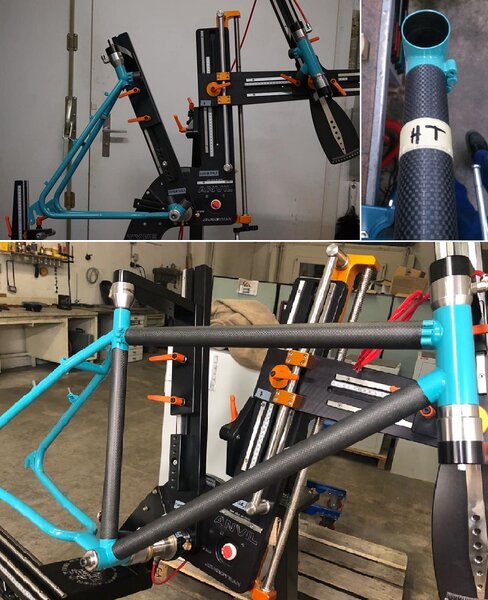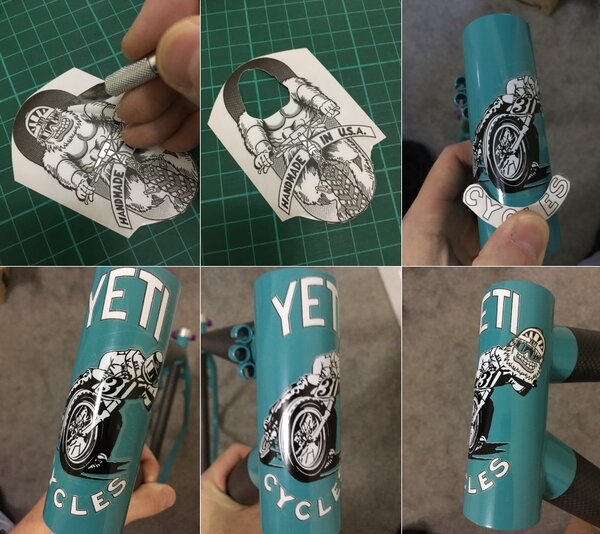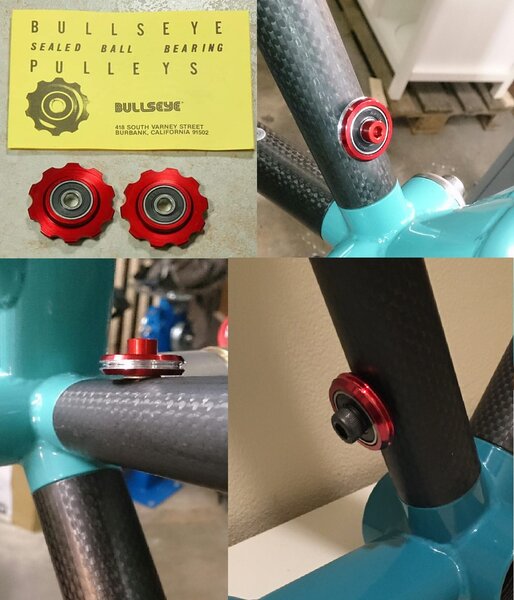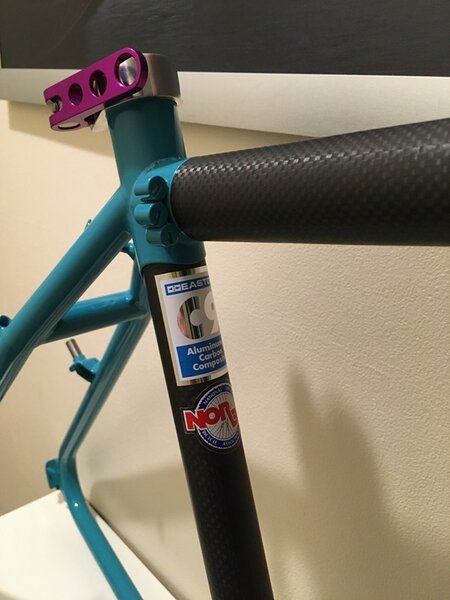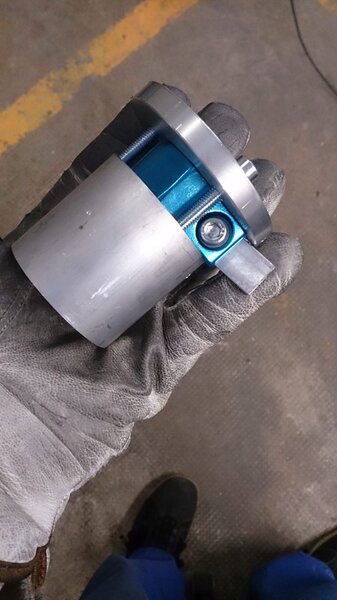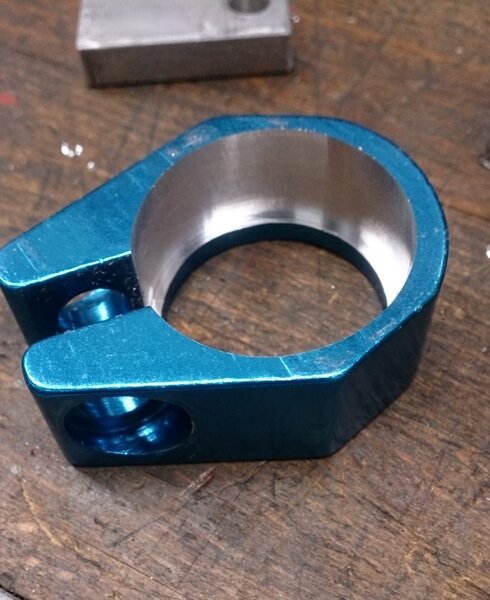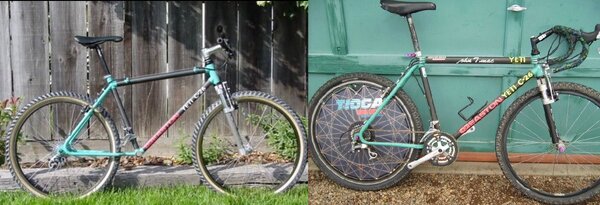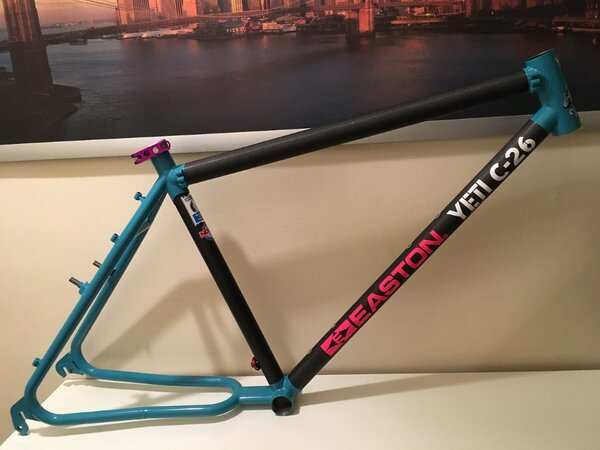Yeti C-26 Team Homage
I’m in the final throes of bringing this build together so I thought I’d get a build thread written up just in time before the year ends, so that it can get into 2019 which is the 30th Anniversary of the first Yeti C-26 frame built by Yeti Cycles in Agoura Hills, California, in 1989. The C-26 has become somewhat of a cult bike, and much has been written about it. For my project, I feel that explaining some history is worthwhile and totally relevant. Hopefully this will be a thread for those who like a build story, but despite some reading, I've edited it down best I can and kept only the relevant photos (I have HUNDREDS and drafting this has been a nightmare).
At least it'll be concise as far as time goes. This build has now been more than a year in the making. If you just want pics and no story, maybe I’ll edit this post when it’s all complete so you can skip straight to the end with the juicy bits. It’s been a really exciting journey, and the end is now in sight. It’ll be like Marmite for many people. If you're a lover, I hope you enjoy the journey. Even if you’re a hater, maybe you’ll still appreciate the story of how and why it’s come to be…
History
Yeti Cycles was founded in 1985 by John Parker. He built the company upon one simple premise: making the fastest and best racing bikes possible. He built a hugely successful company and even in the very early years was setting new standards for mountain bikes and racing. Yeti was the first team to show up at races with its own team van! Yeti enjoyed many successes on the US domestic NORBA circuit as well as a great deal of coverage from the biggest US print publication, MountainBike Action (MBA) magazine. Yeti was about as cool as a company and a team got back then, even with their comparatively small budgets compared to other companies.
The C-26 was the result of Yeti designer Chris Herting’s desire to make Yeti’s hugely successful yet somewhat heavy 4130 aircraft grade cro-moly tubed racing frame, the For Racing Only (FRO), lighter, and Easton tubing having developed a thin-wall aluminum tube wrapped in carbon fiber (called ‘Easton C9’), which was purported to save huge amounts of weight against all-steel counterparts, which Herting used. Yeti star racer, Russell ‘The Muscle’ Worley, rode the first prototype frame at a couple of NORBA races in 1989. Chris lent his name’s initial, C, and his age at the time of making that first frame, 26, to the project name when MBA asked what the new bike would be called when they ran an article about the new tubing and Yeti’s frame development.
Following a great deal of interest generated by the magazine, and from showing it at the world’s biggest bicycle trade show, Interbike, at Long Beach, CA in 1989, Yeti decided to go into production with the C-26 in 1990.
Later that year, the Yeti C-26 would go into the history books as the bike ridden by Juliana Furtado, winner of the women’s XC race at the inaugural UCI World Championships, in Durango, 1990. It was also famously ridden to medal success at the same championships by the biggest MTB star at that time, John Tomac, who ensured that both he and his C-26 would achieve indefinite notoriety by riding on drop bars, even on the downhill course!
The C-26 appeared in the 1991 Yeti Cycles catalog (published late 1990) and besides team bikes, three known customer orders were fulfilled. And yet, doubts over the strength of the bonds between the C9 tubing and the cro-moly lugs caused headaches for Yeti founder John Parker. Production was cumbersome and time consuming, and to confound these issues, Easton had another tubeset under development by the time the Worlds were writing the headlines for Yeti and the C-26, which would itself go on to become a real gamechanger in the industry. That tubeset would eliminate any bonding worries or construction headaches and was even lighter than the C-26. That was, of course, the E9 VariLite® aluminum tubing, which Yeti would go on to create another new model for and become the company’s biggest seller, the Yeti A.R.C.
The moment the Worlds finished, so did the C-26 project. It was shelved in favor of adopting the E9 tubeset going forward, although several team bikes had been made and team racer Joey Erwin would still ride a C-26 on the NORBA circuit for part of the 1991 season. By this time, approximately a dozen full C-26 frames had been built, from a total of 50 tubesets supplied by Easton and several lug sets made by Yeti for production bikes that never were.
“C-46” and ‘Kit Bikes’
American vintage MTB enthusiast and stalwart, Mike Wilk (aka ridevintagemtb), unearthed some of those unused tubes in the late 2000s, which were apparently liberated from Yeti’s Durango factory in the late 90s by disgruntled workers after some difficult years of trading following the sale of Yeti Cycles to Schwinn and then re-sold a couple of years later to sports company Volant, which saw all but two employees lose their jobs. Wilk had Chris Herting revisit the C-26 project some twenty years after building the first, in 2009; ten years ago. Mike dubbed his the ‘C-46 project’ and it was one of the most exceptional retro/vintage MTB bike builds there’s ever been. Indeed, Retrobike members agreed and voted Mike’s C-26 BOTM and BOTY. Since then about a handful of other C-26 bikes have been built by Herting, and perhaps another handful using the lug kits and original tubesets have surfaced, no doubt all increasing the appeal of the original C-26s.
Swiss Attraction
One such original C-26 was purchased post 'C-46' in 2012 by Swiss enthusiast and bike shop owner, Stefan Utz of CycleWorks.ch, who last year, with the help of his friend and compatriot – a framebuilder named Reto Trachsel of RevlRevl Cycles – decided to make their own homage to the C-26. Using contemporary carbon wrapped aluminum sourced from Germany and asking customers to provide a donor Yeti Pro FRO, Stefan and Reto set out to purely honor the original C-26 by making “show bikes for display only”. Their original press release was done via Instagram (see inset). I had known about this beforehand. I had been friends with Stefan for a while and we’d both helped each other with some online projects as well as both having connections to some of the Marin County folks. Stefan knew I had recently purchased a Pro FRO and kept telling me I should (literally) chop it in for one of his C-26s. There was no way I was doing that.
I had a ton of plans for that Pro FRO which I’d spent a small fortune on and waited six weeks to get it from the US. However, a short time after Stefan’s last round of tempting texts, I discovered two dents on the downtube of my Pro FRO that weren’t declared by the seller, and which, in all honesty, I couldn’t say that hadn’t happened since I’d got it (but I suspect they were there when it was sold to me). It had been three months since buying it in July 2018. It was shipped from the seller to Rumpfy where it sat for a month whilst I had a bunch of other parts purchased and shipped to him to put inside the bike box and save postage. It took a further couple of weeks to get the paperwork sorted with BikeFlights. com, but less than three days from Rumpfy dropping it off at his local FedEx depot to arriving on my doorstep, where after the most basic cursory inspection, it sat in my garage untouched for another six weeks before I sought to inspect and tear down the bike in order to re-build as my own. That’s when I discovered the dents. From that precise moment, I knew a Swiss C-26 was on the cards.
To me, the C-26 is just one of those magical and legendary bikes. It’s been acclaimed as a great achievement by many - one of the first to use specially formulated lightweight carbon) whilst also derided in equal measure by many - still too heavy and potential killers due to unconfirmed bonding process. The later replicas and ‘kit bikes’ perhaps more so than the originals, again in equal measure. “WOW” and “what’s the point?” from each of the divided ‘Marmite’ factions. To date, I’ve had the same experiences from close friends and acquaintances within the global retro/vintage MTB community on my ‘homage’ (or replica, but I don’t like to call it that because it’s just so much more). It’s been applauded as well as being ridiculed. Being a show-only frame had a huge appeal to me. For this kind of financial and emotional investment in building a C-26 bike, I wouldn’t want to ride it anyway. But by building one, I could take myself back in time 30 years (ish) and put myself in a pseudo-imaginary situation of “how would I have specced a new C-26 in 1990/91?” but instead doing it for real.
There are no C-26 frames left anywhere now that were never someone else’s C-26 complete bike (as far as I know – maybe just Chris Herting’s personal frame, perhaps). So, I’m starting from scratch. Surreal and very exciting. And I’m doing it as a period specific build, because to do it any other way, would make it less worthwhile, I feel.
‘My’ C-26!
Having seen Mike Wilk’s build, having read through and pored over almost all print and online publications of the Yeti team C-26s and those of CycleWorks, Mike Wilk, Rumpfy, Second Spin, The Pro’s Closet, Chuck Teixeira (former Easton boss), Tucker (aka mtnwing), DL (aka fillet_brazed), Zap Espinoza’s ex-Tomac bike (MBA editor), 24pouces (Pierre), the Silverfish Tomac C-26 Replica (Kev Miller), et cetera, I was fully equipped with the information of what could or should be included for a particular period C-26 build, from 1990/91.
I definitely didn’t want to build a Tomac replica C-26. Tucker and Kev Miller had both done sublime replicas of one or other of Tomac’s three C-26s (his 1990 Worlds XC, 1990 Worlds DH, and a Worlds spare also used on some national events pre-Worlds). It would be a wasted opportunity to do something different. Besides, my frame isn’t the correct size for Tomac. Neither is it the right size for the other most famous C-26, Juli Furtado’s (now at The Pro’s Closet Museum. That, too, was unique in that the geometry of Juli’s bike was unlike any other C-26.
But I really wanted to do a ‘team’ spec build. Trouble was, I had nothing else to suit a 1990/91 period build for a Yeti C-26. My Pro FRO build kit contained a full M900 XTR build and Manitou 3. Too new by far for a C-26. So, I planned a rough list, using only components that I think would’ve been used by some or all team riders (Tomac being a completely special case due to his unique sponsorships), and came up with the main choices thus:
Manitou fork
Deore XT
Turbo saddle
A•TAC stem
Tioga Disk Drive
Onza Ti bar ends
Porc tyres
These were all musts.
I got in touch with Stefan and made a commitment to order. I knew I had to get in line fast if I wanted to get one of these builds. My Pro FRO was stripped down to bare frame, with original decals stuck to a piece of card to retain as a memento. The frame itself is a rare one, having team cut dropouts. I heard from someone that asked Chris Herting about the team cut dropouts on C-26 and Pro FRO frames that very few were ever produced in either model, because it was so labor intensive. I was told the number of Pro FROs with these dropouts may even be a single digit number. My initial deposit was paid to Stefan and the frame sent to Reto’s shop in Switzerland a few days into the New Year.
I still don’t know how many they’ve built (maybe six by now), but mine was scheduled behind Jason Smith’s, who’d been one of the first to order and whose FRO donor was already at RevlRevl when my frame arrived there in January. Knowing Jason was in the queue was great, because he and I bounced build spec ideas off one another and I have to thank Jason here, again, for all his insights and encouragement along the way, including making some discoveries that I might otherwise have had real trouble with, such as the front derailleur being a Ø30.0mm. I’d already bought a NOS Ø28.6 – doh! The Swiss frames are exact replicas of the original C-26, using a 1.18” OD seat tube. I mistakenly thought it was 1⅛” but it’s weirdly 1 POINT 18 of an inch or 30.0mm Luckily I found another NOS XT Ø30.0 DP in France. Some days I’d get messages from Jason showing me his frame in the jig or a new component he’d procured, or a message from Reto or Stefan showing one of their other frames which had been stickered up with team-spec decals – either way, my appetite was whetted from multiple sources as well as having the joy (and sometimes pain) of obtaining parts for my own build.
I’m in the final throes of bringing this build together so I thought I’d get a build thread written up just in time before the year ends, so that it can get into 2019 which is the 30th Anniversary of the first Yeti C-26 frame built by Yeti Cycles in Agoura Hills, California, in 1989. The C-26 has become somewhat of a cult bike, and much has been written about it. For my project, I feel that explaining some history is worthwhile and totally relevant. Hopefully this will be a thread for those who like a build story, but despite some reading, I've edited it down best I can and kept only the relevant photos (I have HUNDREDS and drafting this has been a nightmare).
At least it'll be concise as far as time goes. This build has now been more than a year in the making. If you just want pics and no story, maybe I’ll edit this post when it’s all complete so you can skip straight to the end with the juicy bits. It’s been a really exciting journey, and the end is now in sight. It’ll be like Marmite for many people. If you're a lover, I hope you enjoy the journey. Even if you’re a hater, maybe you’ll still appreciate the story of how and why it’s come to be…
History
Yeti Cycles was founded in 1985 by John Parker. He built the company upon one simple premise: making the fastest and best racing bikes possible. He built a hugely successful company and even in the very early years was setting new standards for mountain bikes and racing. Yeti was the first team to show up at races with its own team van! Yeti enjoyed many successes on the US domestic NORBA circuit as well as a great deal of coverage from the biggest US print publication, MountainBike Action (MBA) magazine. Yeti was about as cool as a company and a team got back then, even with their comparatively small budgets compared to other companies.
The C-26 was the result of Yeti designer Chris Herting’s desire to make Yeti’s hugely successful yet somewhat heavy 4130 aircraft grade cro-moly tubed racing frame, the For Racing Only (FRO), lighter, and Easton tubing having developed a thin-wall aluminum tube wrapped in carbon fiber (called ‘Easton C9’), which was purported to save huge amounts of weight against all-steel counterparts, which Herting used. Yeti star racer, Russell ‘The Muscle’ Worley, rode the first prototype frame at a couple of NORBA races in 1989. Chris lent his name’s initial, C, and his age at the time of making that first frame, 26, to the project name when MBA asked what the new bike would be called when they ran an article about the new tubing and Yeti’s frame development.
Following a great deal of interest generated by the magazine, and from showing it at the world’s biggest bicycle trade show, Interbike, at Long Beach, CA in 1989, Yeti decided to go into production with the C-26 in 1990.
Later that year, the Yeti C-26 would go into the history books as the bike ridden by Juliana Furtado, winner of the women’s XC race at the inaugural UCI World Championships, in Durango, 1990. It was also famously ridden to medal success at the same championships by the biggest MTB star at that time, John Tomac, who ensured that both he and his C-26 would achieve indefinite notoriety by riding on drop bars, even on the downhill course!
The C-26 appeared in the 1991 Yeti Cycles catalog (published late 1990) and besides team bikes, three known customer orders were fulfilled. And yet, doubts over the strength of the bonds between the C9 tubing and the cro-moly lugs caused headaches for Yeti founder John Parker. Production was cumbersome and time consuming, and to confound these issues, Easton had another tubeset under development by the time the Worlds were writing the headlines for Yeti and the C-26, which would itself go on to become a real gamechanger in the industry. That tubeset would eliminate any bonding worries or construction headaches and was even lighter than the C-26. That was, of course, the E9 VariLite® aluminum tubing, which Yeti would go on to create another new model for and become the company’s biggest seller, the Yeti A.R.C.
The moment the Worlds finished, so did the C-26 project. It was shelved in favor of adopting the E9 tubeset going forward, although several team bikes had been made and team racer Joey Erwin would still ride a C-26 on the NORBA circuit for part of the 1991 season. By this time, approximately a dozen full C-26 frames had been built, from a total of 50 tubesets supplied by Easton and several lug sets made by Yeti for production bikes that never were.
“C-46” and ‘Kit Bikes’
American vintage MTB enthusiast and stalwart, Mike Wilk (aka ridevintagemtb), unearthed some of those unused tubes in the late 2000s, which were apparently liberated from Yeti’s Durango factory in the late 90s by disgruntled workers after some difficult years of trading following the sale of Yeti Cycles to Schwinn and then re-sold a couple of years later to sports company Volant, which saw all but two employees lose their jobs. Wilk had Chris Herting revisit the C-26 project some twenty years after building the first, in 2009; ten years ago. Mike dubbed his the ‘C-46 project’ and it was one of the most exceptional retro/vintage MTB bike builds there’s ever been. Indeed, Retrobike members agreed and voted Mike’s C-26 BOTM and BOTY. Since then about a handful of other C-26 bikes have been built by Herting, and perhaps another handful using the lug kits and original tubesets have surfaced, no doubt all increasing the appeal of the original C-26s.
Swiss Attraction
One such original C-26 was purchased post 'C-46' in 2012 by Swiss enthusiast and bike shop owner, Stefan Utz of CycleWorks.ch, who last year, with the help of his friend and compatriot – a framebuilder named Reto Trachsel of RevlRevl Cycles – decided to make their own homage to the C-26. Using contemporary carbon wrapped aluminum sourced from Germany and asking customers to provide a donor Yeti Pro FRO, Stefan and Reto set out to purely honor the original C-26 by making “show bikes for display only”. Their original press release was done via Instagram (see inset). I had known about this beforehand. I had been friends with Stefan for a while and we’d both helped each other with some online projects as well as both having connections to some of the Marin County folks. Stefan knew I had recently purchased a Pro FRO and kept telling me I should (literally) chop it in for one of his C-26s. There was no way I was doing that.
I had a ton of plans for that Pro FRO which I’d spent a small fortune on and waited six weeks to get it from the US. However, a short time after Stefan’s last round of tempting texts, I discovered two dents on the downtube of my Pro FRO that weren’t declared by the seller, and which, in all honesty, I couldn’t say that hadn’t happened since I’d got it (but I suspect they were there when it was sold to me). It had been three months since buying it in July 2018. It was shipped from the seller to Rumpfy where it sat for a month whilst I had a bunch of other parts purchased and shipped to him to put inside the bike box and save postage. It took a further couple of weeks to get the paperwork sorted with BikeFlights. com, but less than three days from Rumpfy dropping it off at his local FedEx depot to arriving on my doorstep, where after the most basic cursory inspection, it sat in my garage untouched for another six weeks before I sought to inspect and tear down the bike in order to re-build as my own. That’s when I discovered the dents. From that precise moment, I knew a Swiss C-26 was on the cards.
To me, the C-26 is just one of those magical and legendary bikes. It’s been acclaimed as a great achievement by many - one of the first to use specially formulated lightweight carbon) whilst also derided in equal measure by many - still too heavy and potential killers due to unconfirmed bonding process. The later replicas and ‘kit bikes’ perhaps more so than the originals, again in equal measure. “WOW” and “what’s the point?” from each of the divided ‘Marmite’ factions. To date, I’ve had the same experiences from close friends and acquaintances within the global retro/vintage MTB community on my ‘homage’ (or replica, but I don’t like to call it that because it’s just so much more). It’s been applauded as well as being ridiculed. Being a show-only frame had a huge appeal to me. For this kind of financial and emotional investment in building a C-26 bike, I wouldn’t want to ride it anyway. But by building one, I could take myself back in time 30 years (ish) and put myself in a pseudo-imaginary situation of “how would I have specced a new C-26 in 1990/91?” but instead doing it for real.
There are no C-26 frames left anywhere now that were never someone else’s C-26 complete bike (as far as I know – maybe just Chris Herting’s personal frame, perhaps). So, I’m starting from scratch. Surreal and very exciting. And I’m doing it as a period specific build, because to do it any other way, would make it less worthwhile, I feel.
‘My’ C-26!
Having seen Mike Wilk’s build, having read through and pored over almost all print and online publications of the Yeti team C-26s and those of CycleWorks, Mike Wilk, Rumpfy, Second Spin, The Pro’s Closet, Chuck Teixeira (former Easton boss), Tucker (aka mtnwing), DL (aka fillet_brazed), Zap Espinoza’s ex-Tomac bike (MBA editor), 24pouces (Pierre), the Silverfish Tomac C-26 Replica (Kev Miller), et cetera, I was fully equipped with the information of what could or should be included for a particular period C-26 build, from 1990/91.
I definitely didn’t want to build a Tomac replica C-26. Tucker and Kev Miller had both done sublime replicas of one or other of Tomac’s three C-26s (his 1990 Worlds XC, 1990 Worlds DH, and a Worlds spare also used on some national events pre-Worlds). It would be a wasted opportunity to do something different. Besides, my frame isn’t the correct size for Tomac. Neither is it the right size for the other most famous C-26, Juli Furtado’s (now at The Pro’s Closet Museum. That, too, was unique in that the geometry of Juli’s bike was unlike any other C-26.
But I really wanted to do a ‘team’ spec build. Trouble was, I had nothing else to suit a 1990/91 period build for a Yeti C-26. My Pro FRO build kit contained a full M900 XTR build and Manitou 3. Too new by far for a C-26. So, I planned a rough list, using only components that I think would’ve been used by some or all team riders (Tomac being a completely special case due to his unique sponsorships), and came up with the main choices thus:
Manitou fork
Deore XT
Turbo saddle
A•TAC stem
Tioga Disk Drive
Onza Ti bar ends
Porc tyres
These were all musts.
I got in touch with Stefan and made a commitment to order. I knew I had to get in line fast if I wanted to get one of these builds. My Pro FRO was stripped down to bare frame, with original decals stuck to a piece of card to retain as a memento. The frame itself is a rare one, having team cut dropouts. I heard from someone that asked Chris Herting about the team cut dropouts on C-26 and Pro FRO frames that very few were ever produced in either model, because it was so labor intensive. I was told the number of Pro FROs with these dropouts may even be a single digit number. My initial deposit was paid to Stefan and the frame sent to Reto’s shop in Switzerland a few days into the New Year.
I still don’t know how many they’ve built (maybe six by now), but mine was scheduled behind Jason Smith’s, who’d been one of the first to order and whose FRO donor was already at RevlRevl when my frame arrived there in January. Knowing Jason was in the queue was great, because he and I bounced build spec ideas off one another and I have to thank Jason here, again, for all his insights and encouragement along the way, including making some discoveries that I might otherwise have had real trouble with, such as the front derailleur being a Ø30.0mm. I’d already bought a NOS Ø28.6 – doh! The Swiss frames are exact replicas of the original C-26, using a 1.18” OD seat tube. I mistakenly thought it was 1⅛” but it’s weirdly 1 POINT 18 of an inch or 30.0mm Luckily I found another NOS XT Ø30.0 DP in France. Some days I’d get messages from Jason showing me his frame in the jig or a new component he’d procured, or a message from Reto or Stefan showing one of their other frames which had been stickered up with team-spec decals – either way, my appetite was whetted from multiple sources as well as having the joy (and sometimes pain) of obtaining parts for my own build.
Attachments
-
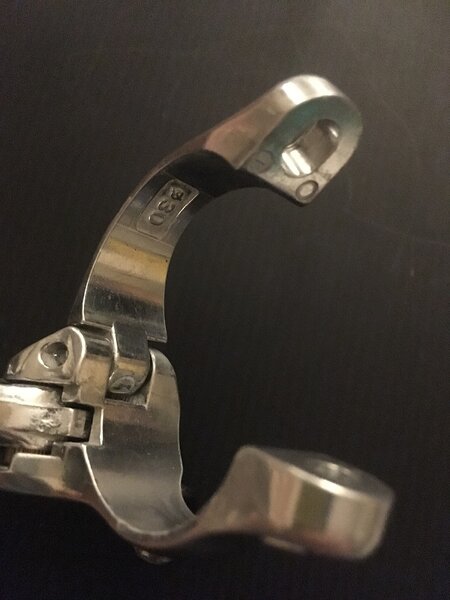 fd 30Ø.jpg72.3 KB · Views: 3,516
fd 30Ø.jpg72.3 KB · Views: 3,516 -
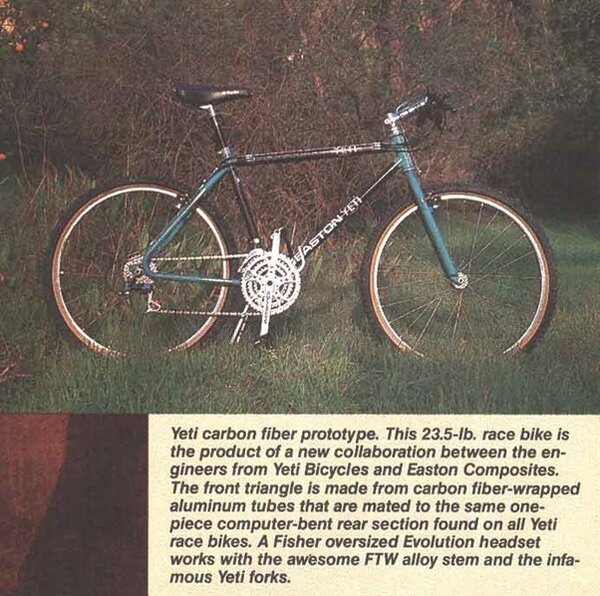 MBA PROTO.jpg89.2 KB · Views: 3,537
MBA PROTO.jpg89.2 KB · Views: 3,537 -
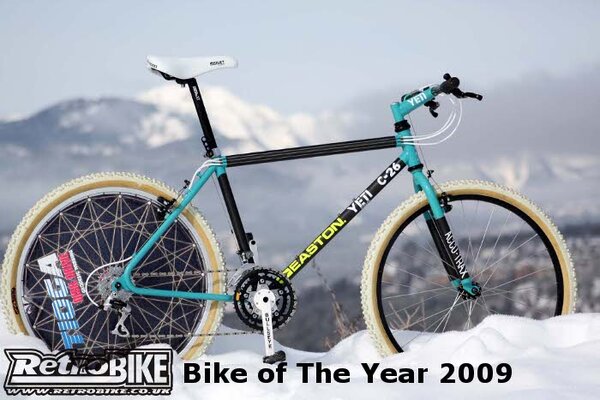 RB BOTY Yeti C46.jpg57.8 KB · Views: 3,562
RB BOTY Yeti C46.jpg57.8 KB · Views: 3,562 -
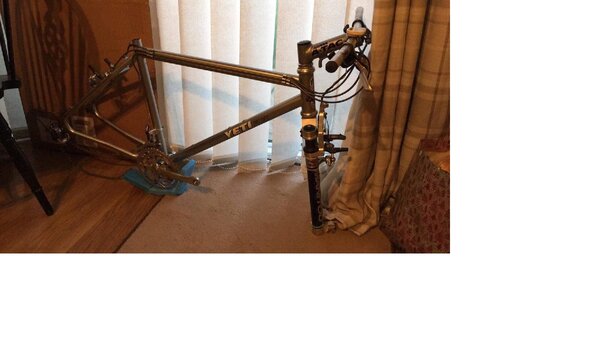 Pro FRO as it landed.jpeg145.9 KB · Views: 3,557
Pro FRO as it landed.jpeg145.9 KB · Views: 3,557 -
 Pro FRO bare collage.jpg135.9 KB · Views: 3,548
Pro FRO bare collage.jpg135.9 KB · Views: 3,548 -
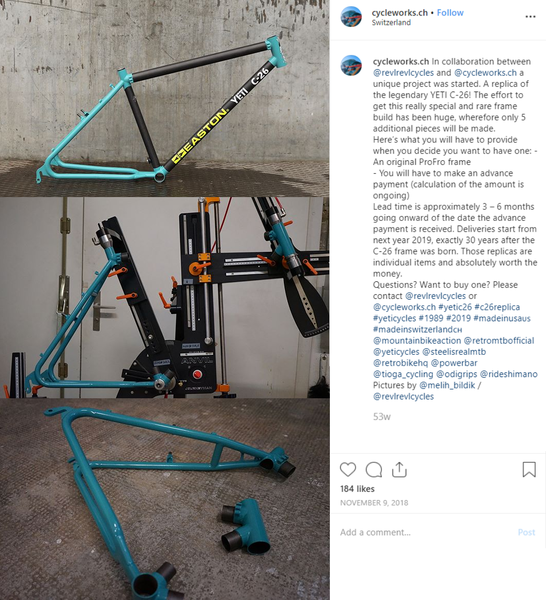 Instagram post C-26.png431.5 KB · Views: 3,521
Instagram post C-26.png431.5 KB · Views: 3,521 -
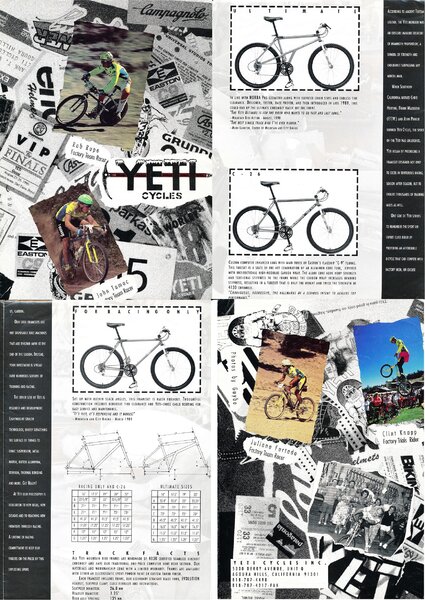 1991 YETI CATALOG BIG.jpg1.3 MB · Views: 2,470
1991 YETI CATALOG BIG.jpg1.3 MB · Views: 2,470
